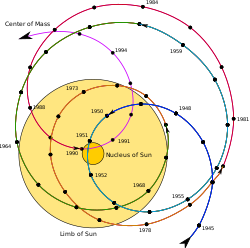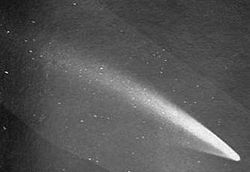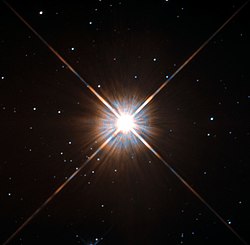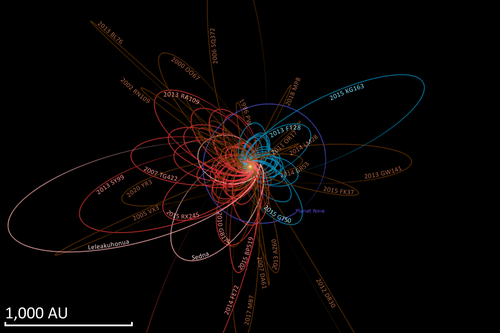This article needs to be updated.(January 2020) |
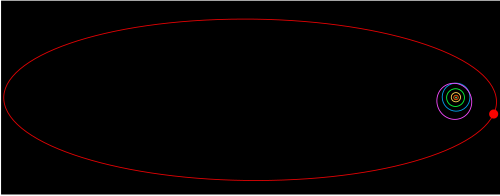
This is a list of Solar System objects by greatest aphelion or the greatest distance from the Sun that the orbit could take it if the Sun and object were the only objects in the universe. It is implied that the object is orbiting the Sun in a two-body solution without the influence of the planets, passing stars, or the galaxy. The aphelion can change significantly due to the gravitational influence of planets and other stars. Most of these objects are comets on a calculated path and may not be directly observable. [1] For instance, comet Hale-Bopp was last seen in 2013 at magnitude 24 [2] and continues to fade, making it invisible to all but the most powerful telescopes.
Contents
- Explanation
- Barycentric vs heliocentric orbits
- Eccentricity and Vinf
- Orbital epochs
- Comets with greatest aphelion (2 body heliocentric)
- Distant comets with long observation arcs and/or barycentric
- Minor planets
- Minor planets with a heliocentric aphelion greater than 400 AU
- Greatest barycentric aphelion
- Comparison
- See also
- References
- External links
The maximum extent of the region in which the Sun's gravitational field is dominant, the Hill sphere, may extend to 230,000 astronomical units (3.6 light-years) as calculated in the 1960s. [3] But any comet currently more than about 150,000 AU (2 ly ) from the Sun can be considered lost to the interstellar medium. The nearest known star is Proxima Centauri at 269,000 AU (4.25 ly), [4] followed by Alpha Centauri at about 4.35 light years. [4]
Oort cloud comets orbit the Sun at great distances, but can then be perturbed by passing stars and the galactic tides. [5] As they come into or leave the inner Solar System they may have their orbit changed by the planets, or alternatively be ejected from the Solar System. [5] It is also possible they may collide with the Sun or a planet. [5]
S/2021 N 1 (the outermost moon of Neptune) takes over 27 years to orbit Neptune, comets can take up to 30 million years to orbit the Sun, and the Sun orbits the Milky Way in about 230 million years (a galactic year).
| Satellite | Orbital period (years) | Parent body | Percentage of parent body orbital period |
|---|---|---|---|
| S/2021 N 1 | 27.4 | Neptune | 16.6% |
| Oort cloud comet | 30 million | Sun | 13% |
| Sun | 230 million | Milky Way | N/A |
